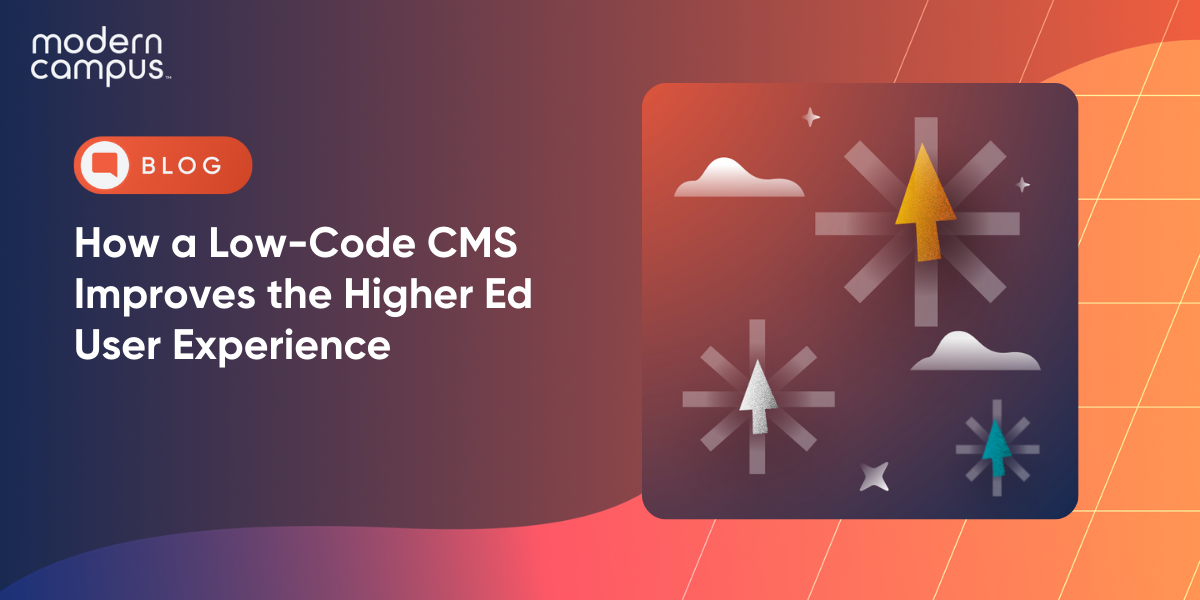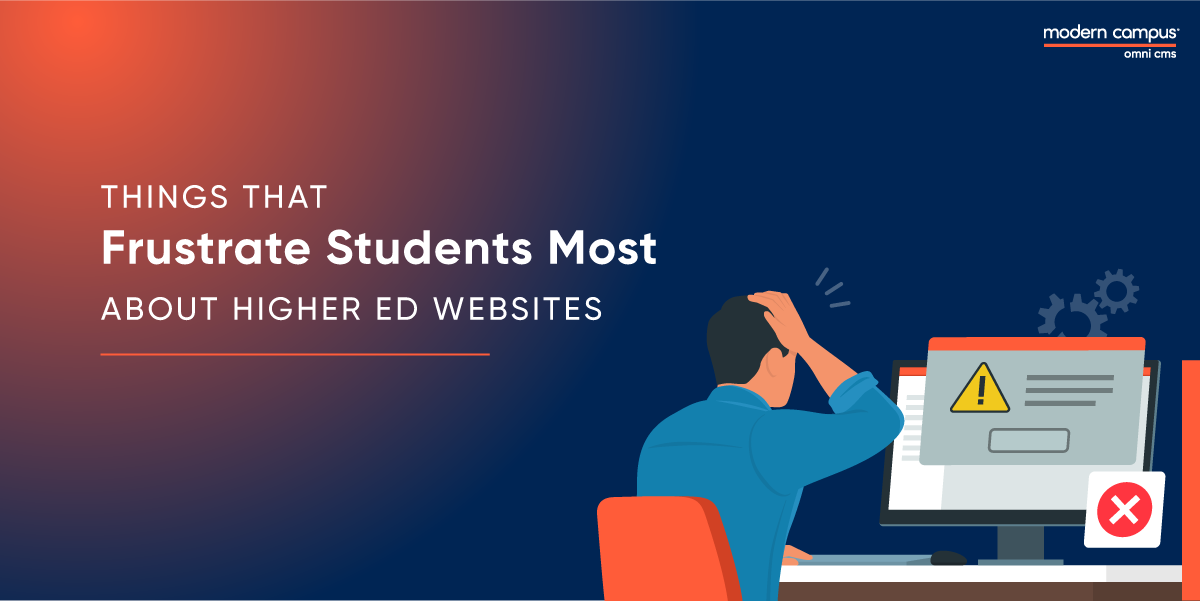How to Improve Your Higher Ed's Web Development Speed & Efficiency
The school’s website is the first place that students, alumni, donors, faculty and other visitors check when they need information fast.
Whether someone’s looking for information on scheduled events, school closures, weather reports and news — even faculty, staff and program announcements — it should be easy to find on the school’s website.
This expectation is so strong that web visitors feel frustrated when anything’s out of date.
Colleges and universities have websites that are made of thousands of web pages. A set of eight web pages takes on average 40-to-100 hours to create. That means, at minimum, a 1000-page website (which is significantly smaller than the average website) would take 40,000-100,000 staff hours to create!
Managing a website with tens of thousands of pages — and keeping it updated — takes too much time and effort.
That’s why higher education institutions need a low-code CMS, purpose-built for their needs.
What is a low-code CMS and why do colleges need it?
A low-code CMS enables non-technical content creators to design and develop sophisticated web pages from scratch quickly and efficiently. It has built-in tools that minimize the need for coding, a low-code approach to website management. That means marketing professionals can design new web page layouts, landing pages and microsites—all without requiring a developer or HTML knowledge.
In our previous blog posts, we explained how a low-code CMS can help you reduce web development costs and improve the user experience. In this one, we’re discussing how it increases development speed and improves efficiency.
A low-code CMS reduces bottlenecks and increases efficiency
With a standard CMS, every change has to funnel through IT or a website manager. The website manager then adds them to a growing pile of revisions to address when they get a free minute from other, seemingly more pressing projects. Consequently, turnaround can take days or even weeks.
In some cases, the new information will become outdated by the time someone makes the change!
Relying on an outside design firm to make content and design changes can be equally frustrating. Each design change requires a waiting period and comes with a price tag.
However, a modular layout creator built in to a low-code CMS eliminates this bottleneck by making it easy for non-tech and non-design-savvy professionals to make changes and, better yet, design new website pages.
A low-code CMS increases development speed
A low-code CMS drastically reduces the timeframe for web page creation. Just as impressive, content creators can make changes on the spot. There’s no need to wait for another department or service simple design changes; nontechnical team members can simply use little-to-no-code CMS features to make changes themselves.
A low-code CMS for higher ed will include drag-and-drop tools. It also gives access to premade tiles and content blocks. All these components can be combined to form a reusable modular layout in no time. Then, these blocks can be quickly duplicated and modified to create any number of variations. New content contributors and those with no technical skills can access them to easily tweak designs or create new pages in minutes.
Want to learn how you can transform the way you manage your website?
A low-code, next-generation CMS transforms how higher ed professionals manage their websites and create pages. It’s easy because all the necessary tools and features are at their fingertips.
With all the above-mentioned robust product capabilities, Modern Campus CMS is a complete solution with modules and partnerships designed specifically to serve the needs of colleges and universities.
Creating Web Pages with Melody Layouts
Watch our on-demand webinar to learn how can transform your website with Modern Campus CMS powered by Melody.
Website Design & Personalization
Last updated: September 22, 2022



